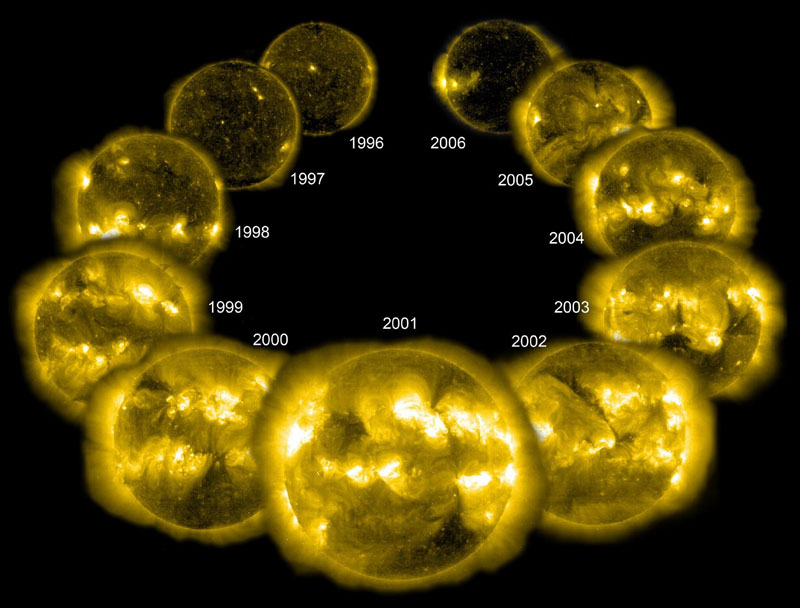|
Here's What's New re GOES SEM data
| December 13, 2014 |
GOES-13 and GOES-15 SEM data are missing between December 13, 11:46 UTC and December 14, 01:02 UTC due to power infrastructure maintenance.
|
| July 17-18 2014 |
GOES-15 magnetometer-1 outage due to command state error:
2014-07-17 19:01:46 - 2014-07-18 18:08:09
|
| July 3, 4, 10 2014 |
GOES-15 SEM outages due to ground system hardware failure:
2014-07-03 19:35:03.717 -
2014-07-03 20:37:04.910
2014-07-04 17:43:39.603 -
2014-07-04 20:46:30.650
2014-07-10 16:53:40.183 - 2014-07-10 17:30:13.567
|
| April 22, 2014 |
GOES-15 XRS data not collected at satellite 2014-04-22 14:04:29.890 to 2014-04-22 16:55:17.923
In the full resolution data channels A and B are 1x10-9 in some of the affected records and 0.0 in others. |
| March 6, 2014 |
The web services link will be removed from these web pages beginning today. There is an error that affects the date-time in returned data for two hours at the time of the spring daylight savings time each year. User products (.csv and.nc) were regenerated to remove this issue, this was completed on March 19th. |
| February 21, 2014 |
GOES 13-15 MAGPD data are currently unavailable. Please contact Juan Rodriguez (juan.rodriguez@noaa.gov). |
| January 25, 2014 |
GOES-13 and GOES-15 SEM data are missing between January 25, 14:00 and January 26, 04:00 due to power infrastructure maintenance. |
| May 22, 2013 |
GOES-13 data from both SEM and SXI ceased to flow at 10:30 UT.
GOES-14 will be reactivated on the 23rd. |
| May 1,2013 |
GOES-15 SEM ground system processor failed 2013-05-01 04:23:59.123 to2013-05-01 05:42:45.883
|
| October 22, 2012 |
GOES-15 data from both SEM and SXI ceased to flow in the UT afternoon. GOES-14 and GOES-15 will be off and on for a month or so -- the exact schedule is proprietary. |
Useful Websites
displaying GOES data: |
Lockheed Martin Solar & Astrophysics Laboratory: Latest Events
RHESSI Science Team at Berkeley: Plots, Nuggets |
GOES Greatest Hits

|
See some of the best stuff that GOES has to offer in the Greatest Hits page.
Big stuff, new stuff, old stuff, cool stuff, come one come all.
|
| What to Look For |
There are a lot of data on this site and the sheer volume may hide some of the more interesting details.
All solar activity follows a distinctive cycle that is nominally 11 years in length, the sunspot number is the oldest measure of this cycle.
The chart below shows the progress of Solar Cycle 25.


The image above shows a sequence of snapshots of the Sun, taken each year over a solar cycle.
The images were taken by SOHO's Extreme ultraviolet Imaging Telescope (EIT)
The list of major ion storms maintained by SWPC shows a solar cycle pattern of frequency. Looking at GOES data during these large events will give you a scale for how these data react to extreme solar activity.
The GOES Greatest Hits Page includes a series of GOES SEM plots during the most extreme of these events.
GOES Solar X-ray Imager movies show recent activity by combining SXI images and XRS time series data.
You can see finer details of recent data by viewing a collection of 3-day, 14-day, and 108 day plots.
Solar Cycle variations can also be seen in the pattern of TDRS-1 memory upsets. |
|